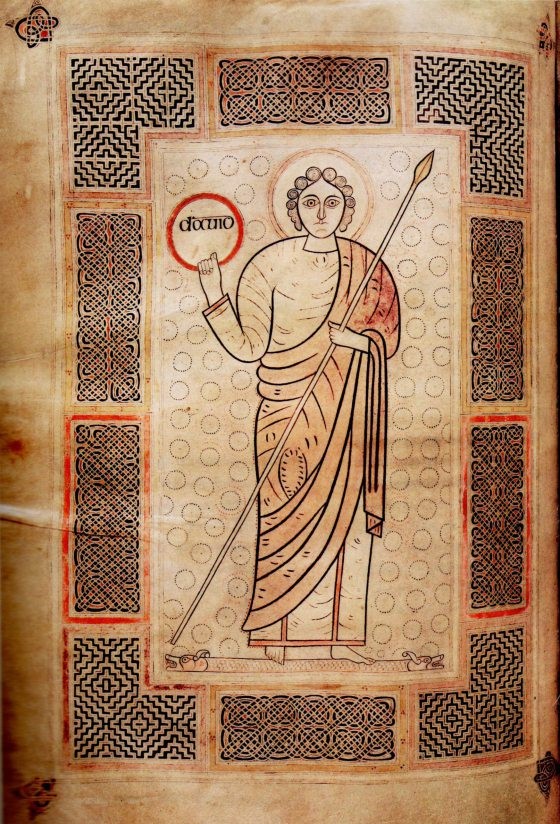Jesus as the new David - Cassiodorus
Jesus as the New David
by Victoria Emily Jones

This illumination is from an eighth-century copy of Cassiodorus’s sixth-century Commentary on the Psalms. (The manuscript is sometimes referred to as the Durham Cassiodorus because of the cathedral library that houses it.) Created in the Anglian kingdom of Northumbria, it shows a haloed, cloaked figure holding a spear in one hand and in the other an orange disc (halo?) that encircles the name David. The figure stands on a snarling two-headed beast, a reference to Psalm 91:13: “You will tread on the lion and the adder; the young lion and the serpent you will trample underfoot.”
Although this figure is labeled as David, he is also meant to be read—as Cassiodorus tells us in his commentary—as Jesus Christ. His pose and attributes evoke the then-widespread iconography of the Resurrection, which showed Jesus trampling the twin beasts of sin and death—a motif sometimes referred to in art historical literature as the super aspidem motif.
Here Christ is presented as the New David, the warrior-king from whom he descended.
In the book Anglo-Saxon Art, Leslie Webster writes that the dual nature of the Christ/David image spoke both to the Anglo-Saxon taste for riddles, verbal and visual, and to the Anglo-Saxon cult of the heroic Christian warrior-king.
For more on the typological parallels between King David and Jesus, see Jonathan Edwards’s “Types of the Messiah” (starting with “There is yet a more remarkable, manifest and manifold agreement between the things said of David in his history and the things said of the Messiah in the prophecies. . . .”).
*******
Christ/David from Cassiodorus' Commentary on the Psalms (Durham Cathedral Library, MS B.ii.30, fol. 172v), second quarter of the 8th century. Image size: 42 x 29.5 cm.


